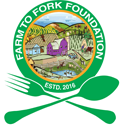Occurrence of fungal pathogens on improved jujube in Bangladesh
Keywords:
Occurrence, Fungal pathogens, JujubeAbstract
Disease causes tremendous yield loss and deteriorates fruit quality in terms of nutrition and also reduces the market value if not manage properly. Occurrence and proper identification of diseases are utmost important for developing an effective management approach. An investigation was conducted during 2007-08, 2008-09 and 2009-10 in five major Jujube growing districts of Bangladesh. A total of 405 diseased samples namely leaf, stem, fruit and inflorescence were collected from Gazipur, Mymensingh, Pabna, Rajshahi and Rangpur. Altogether 1851 fungal infections were recorded of Jujube and average number of fungal infections per sample was 4.57. The diseases as well as the fungi associated with them were identified. Altogether 16 fungal pathogens were isolated from different plant parts of Jujube which were, Alternaria alternata, Aspergillus spp., Capnodium sp.,Cercospora ziziphi, Colletotrichum gloeosporioides, Curvularia lunata, Fusarium semitectum, Isaiopsis indica var. ziziphi, Lasiodiplodia theobromae, Miterialla ziziphi, Nigrospora sp., Oidium erysiphoides f. sp. ziziphi, Penicillium sp., Pestalotiopsis palmarum, Phomopsis sp. and Rhizophus sp. Among the isolated fungal pathogens, C. lunata was the most predominant followed by Fusarium semitectum, A. alternata, C. gloeosporioides, O. erysiphoides f. sp. ziziphi, Pestalotiopsis palmarum, Aspergillus spp., Rhizophus sp. and Penicillium sp. Their prevalence was 11.29, 11.08, 9.99, 9.62, 9.35, 8.75, 6.70, 6.32 and 5.35%, respectively. Prevalence of other fungi ranged 1.89-4.54%. Among three varieties, BAU Kul was found as the most disease vulnerable variety followed by Apple Kul, whereas, BARI Kul-1 showed second highest infection in terms of fruit infection.
Downloads
Downloads
Published
How to Cite
Issue
Section
License
Copyright (c) 2016 by the author(s). This work is licensed under a Creative Commons.

This work is licensed under a Creative Commons Attribution-NonCommercial 4.0 International License.





















